In the politically pointed game OnlyBans, players take on the role of online sex worker, trying to post material on social media platforms to get the exposure they need to make a living. Players choose from images of torsos and cleavage, images based on ones that real sex workers have tried to post. Some of these thirst trap images might be accepted, allowing the player to move on to the next step of the game. But many of them will be banned, forcing the player to try again and again as their funds get lower and lower. A torso here, cleavage there—you never know what’s going to get banned.
Though sex workers are perhaps the most dependent on the allure of thirst traps—that’s how many of them make a living—even casual users of social media platforms ranging from Facebook to TikTok to Twitter have run afoul of the mysterious rules and algorithms that determine what’s acceptable online content and what’s not. Gay guys who want to show off photos of their weekend at a leather event, trans people who want to share transition tips and artists who want to promote their racy self-portrait might all find themselves on the wrong side of the algorithm. We talked to several LGBTQ2S+ creators about their adventures in building their online personas—and boy, do they have strategies to share.
In the last couple of years, social media platforms have made noise about creating a safer environment for users, and there’s been a lot written about corporate initiatives to prevent the spread of fake news, crack down on harassment and protect children from sexual abuse and bullying. But efforts to make social media a safer space have been inconsistent and are often unfair to a wide range of LGBTQ2S+ users, pushing aside not only sex workers, but artists and everyday queers trying to express themselves and build a community.
Creators told us that’s often because many of the platforms use systems that are complaint-driven. Posts about queer sexuality and gender nonconformity may trigger straight people to report content they wouldn’t bat an eye at if it involved cis heterosexual images, ideas and activities. Many queer and trans content creators who cross the line end up in a Kafkaesque social media jail, banned temporarily or permanently from posting, and often left in the dark about what exactly they did wrong. Even more mysteriously, creators can end up “shadow banned”—their account functioning normally from their POV, while their content is kept away from users’ feeds. Like a restaurant dish that’s not mentioned on the menu, shadow-banned content sits there not getting the attention it might have had.
Queer content creators must play a game with the social media giants, trying to maximize their online presence to connect with friends, fans and customers, while avoiding the wrath that comes from violating ever-changing and poorly explained terms of service. They have to twist their art, ideas and online personalities to adjust to each of the social media platforms. Whether it’s on Instagram, Twitter, TikTok, Reddit, Facebook or OnlyFans, creators have become adept at censoring themselves.
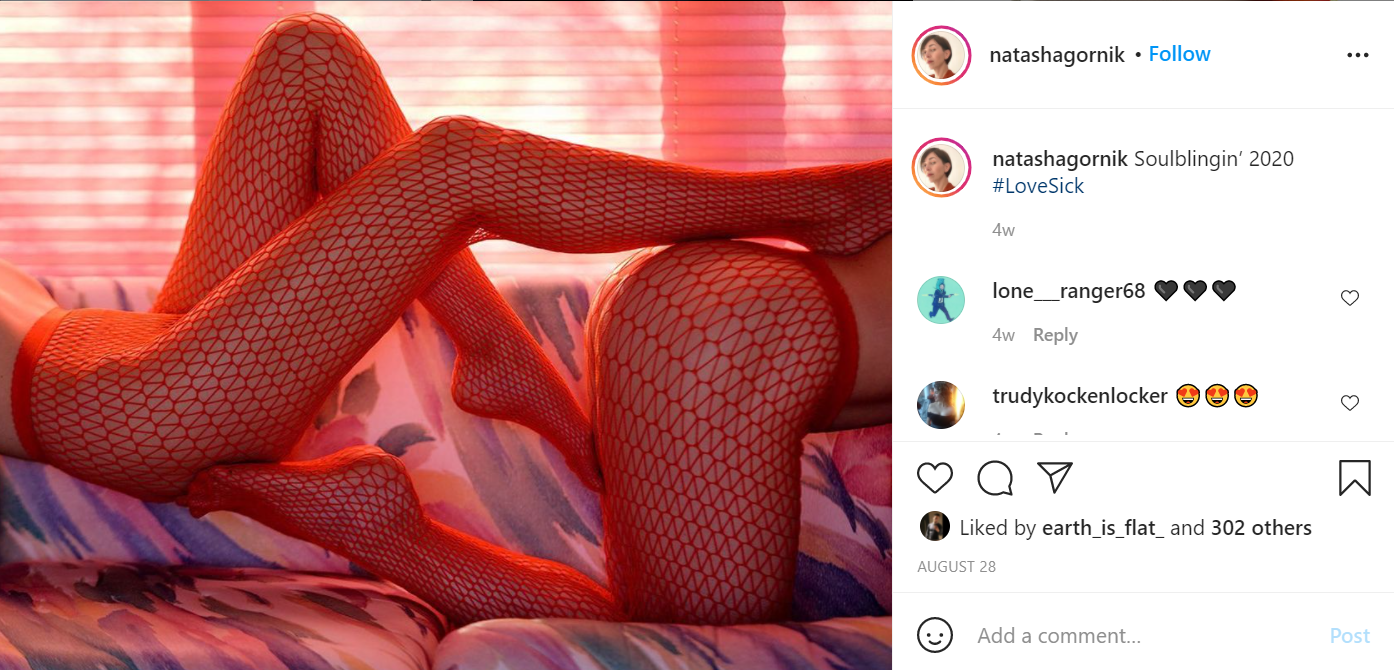
Credit: Natasha Gornik
“Just from my experience of what’s been taken down in the past, I try to stay away from nipples. I will blur out genitalia. And I won’t tag people in a photograph if I feel it might hurt them through my work getting censored and shadow banned,” says Natasha Gornik, a Brooklyn-based visual artist whose work often depicts people in the BDSM (bondage and discipline, domination and submission, sadism and masochism) community. “I used to spend time and energy crafting images so I could put them on Instagram, and I would say in the post, ‘This is cropped.’ I don’t bother doing that anymore. I just don’t choose those images. There are certain words I won’t use anymore. I won’t use ‘sex worker,’ I won’t use ‘slut.’ If I use ‘sex,’ I’ll use a snake emoji instead of an ‘s’, you know, just as a workaround.”
Though Gornik supports her peers who try to challenge and push the boundaries of Instagram/Facebook, the former dominatrix and pornographer seems, after years of removals, resigned to submitting to the platforms’ restrictions. “I don’t think that much change is going to happen. You can work with it in whatever way you want or you can work against it, and, specifically for Instagram, I don’t know that it will get you very far.”
Since content on the big platforms is available in most (but not all) countries, from the very liberal to the very conservative, there is a temptation for social media giants to curate their content to the most uptight tastes. “There’s so much stigma around sexuality—not just sexuality, but even nudity. It’s all about money at the end of the day and who is funding it,” says Gornik.
Gornik, like many sex-positive and offbeat artists, remains nostalgic for the days before Tumblr’s 2018 “adult content” ban, which pushed many producers of racy, controversial or otherwise explicit material off the microblogging site, leaving them to find a place on platforms that seem more intent on being global juggernauts. Instagram, with its focus on arresting images, is where many photographers feel they have to be, no matter how many compromises are necessary. Like Gornik, New York-based photographer Kenneth Gruenholtz, whose work may be described as a softcore celebration of gym-built male bodies, is also dependent on Instagram to build his audience and to find models.
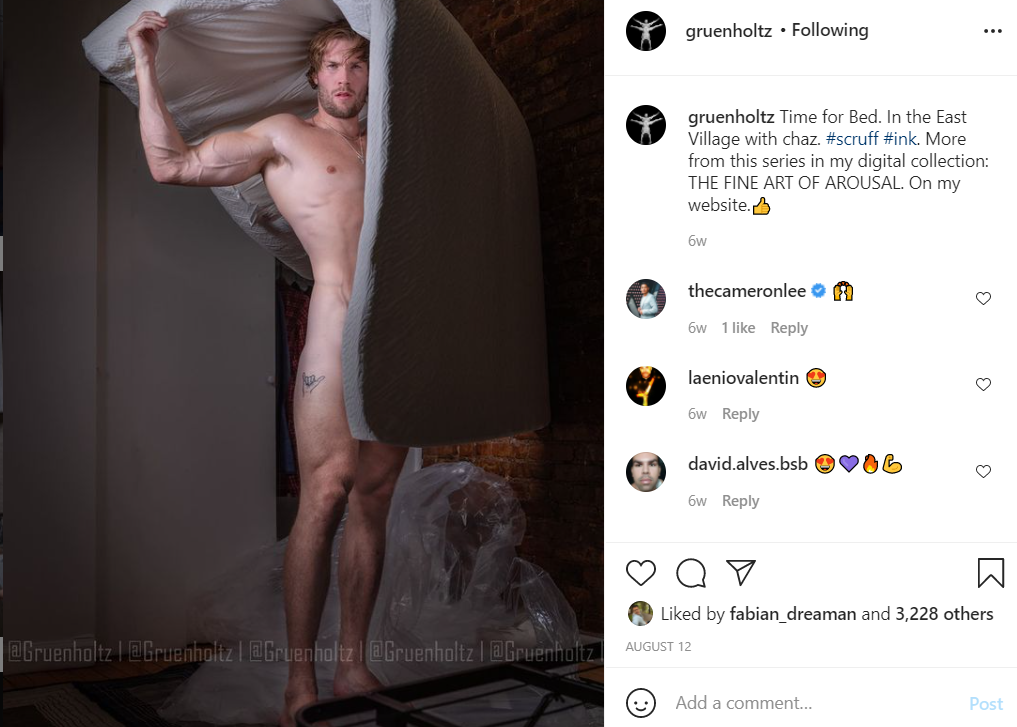
Credit: Kenneth Gruenholtz
“Toward the end of 2016, I started my Instagram account, which took off very quickly. I was shooting images of actors and dancers with mostly no clothes on,” Gruenholtz tells me. “It was fine for a while, but then my artwork started being removed by Instagram, even though it was in compliance with its own rules. They have a rule, for example, where you can show a butt as long as it’s not a close-up. I like to show the whole figure, to give a sense of the person. I’ve never done a close-up.” When his photos were repeatedly taken down, he contacted the U.S.-based lobby group National Coalition Against Censorship, which complained to Facebook, which owns Instagram. Though the platform eventually restored Gruenholtz’s non-close-up-butt images, the damage had already been done. “They’re restored in the order in which they were posted, so they’re buried in my feed and people aren’t going to search for them because they don’t know it exists,” says Gruenholtz.
Then there’s Twitter, which has been much more relaxed—though certainly not laissez-faire—about sexual images. But because of that, the platform has become a haven for pornography, which can overwhelm posts that are more artistic, nuanced or personal. Gruenholtz says his work doesn’t typically meet the expectations of Twitter users.
“I’ve never had anything rejected by Twitter, so I guess it’s a safe space. I don’t mind the pornography, but I’m not sure I get all the audience that might be interested in my work because the people who do pornography promote it so aggressively that my work takes a backseat,” he says. The attention on Twitter also somehow seems less valuable. “On Twitter, I blur the frontal even though I don’t have to because if I showed everything, people won’t come to my website to see the work.”
“They want to promote their platform and have you persuade models to be on it.”
For a while, Gruenholtz says he made a lot of money on the subscription site OnlyFans, but then that platform changed its rules and demanded that his models have their own OnlyFans accounts—presumably as a way to document their age and their consent, but also as a way, he speculates, to attract new content makers so they can take a cut. “They want to promote their platform and have you persuade models to be on it.”
Oli Raptor, a U.K.-based photographer whose work is often sexually charged, is still on OnlyFans; he gets his models to sign releases, but the platform has never asked him for them. He figures they haven’t given him a problem because most of his models are, indeed, already on OnlyFans. (Oli Raptor is the name he uses for his art practice; for this story I have used the name interviewees go by most widely online.) Raptor, of course, also uses Instagram but substantially crops his images for that platform. He’ll also drop a big red arrow icon on a butthole if he has to. “I try to craft things as much as possible to get what I want out of the image. There’s always more there that you can’t see,” he says.
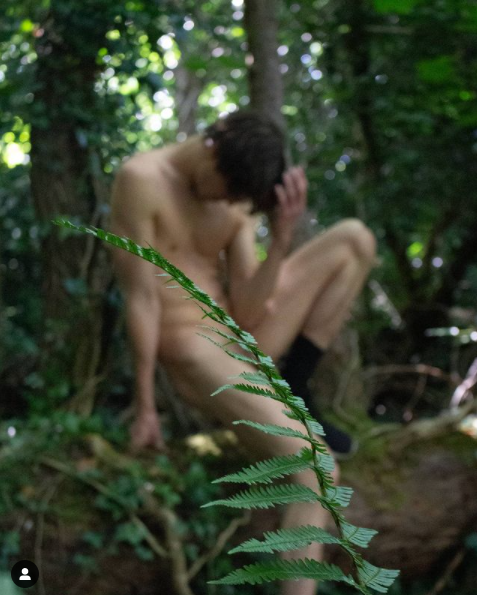
Credit: Ollie Raptor
Some of what sets off Instagram bans has nothing to do with the level of explicitness, says Raptor, but about the body types and the sexuality his photos are depicting. Models with certain stereotyped bodies are less likely to draw complaints and bans than models who don’t conform to mainstream ideas of what sexy is. “You have one guy in a G-string and everything on show and that’s fine. But then you do the same thing with a guy with, like, stomach hair, and it’s now an issue,” says Raptor. “I had one taken down because it was a nude person, but when I responded that it wasn’t a full nude, it was a distorted reflection of a nude person, they gave me that one back.”
The constantly changing rules on various platforms are an endless source of frustration for content creators, who may spend large amounts of time uploading images and videos—and sometimes building enormous followings—only to have them taken away from them; it may not be up there with harassment, but it can be a tremendous waste of effort. Ths summer OnlyFans freaked out its client base—which includes sex workers and pornographers, as well as artists and celebrities—when it announced it was, like Tumblr before it, banning sexually explicit content. It quickly reversed the decision, but the announcement reminded creators how much control the United Kingdom-based platform, with projected revenue of USD$1.2 billion for 2021, has over their ability to make a living.
“We were putting too many eggs in one basket,” says Cam, one half of Cam and Alex, a Palm Springs gay couple who post playful, sometimes raunchy, meme-driven videos about sex and relationships on TikTok and Instagram. Though their comedy videos can be enjoyed on their own, they are meant to drive traffic to their OnlyFans page, where you can watch their more explicit material for USD$12.99 a month. “After the announcement, we made a JustForFans [an OnlyFans rival] account. We dumped all our content—more than 200 pictures and more than 100 videos—there, which wasn’t easy. But knowing that they have the ability to end your account at their own discretion—having everything mirrored across both platforms is kind of a safety net, if you will.”

Credit: Cam and Alex
TikTok as a marketing tool seems like a strange fit for sex workers or for anybody wanting to do something racy. Based in China, the platform is well known for being capriciously censorious. It doesn’t even allow creators to link to subscription sites like OnlyFans. Cam and Alex’s TikTok account links only to Instagram, and from Instagram, they must shepherd potential customers further down the road to their paid content. But their cheerfully goofy schtick fits tonally on TikTok and, the thinking goes, makes them more attractive to guys who might not like the stone faced, take-that-dick porn that’s become the industry standard—they’re selling sex where you don’t expect it, in ways you don’t expect. “We understand that not everybody is looking for explicit content so we still intertwine comedy and relationship stuff and things that other people would enjoy,” says Cam.
The couple uses Twitter but, like Gruenholtz, feels lost amidst the generic pornographic images and the expectation that explicit content should be free. “On Twitter, it feels like it’s just like a meat market for sex workers,” says Cam. “It’s like the body or the look sells it. Whereas on TikTok, it feels like you’re giving them more of you, a kind of companionship and the stuff people are looking for outside of just good looks.”
Because TikTok is so strict, Cam and Alex have multiple accounts (they’ve been banned after getting 80,000 followers and had to start again from scratch; at the time of writing their most popular account had more than 108,000 followers) on which they sometimes test the limits, trying an idea that’s more risqué on one account, less so on another. They’ve learned not to show too much skin if the movements are suggestive—you can be crasser if you’re wearing clothes. They have also become savvy about implying, rather than showing, dirty thoughts and images through text, music and voice-overs. Despite TikTok’s best efforts, they prove that it’s not so hard to conjure vivid sexual images in the imaginations of viewers.
“If even the tamest gay content shows up on the ‘For You’ page of a homophobe, it’s likely to get reported.”
TikTok is an interesting case because the site is also well known for giving users more and more of the kind of content they’ve already watched, yet its algorithm also throws out unexpected content, perhaps to see if it can lure users down another one of its rabbit holes. Being a TikTok wild card can be great for content creators who want to be introduced to new fans, but it can cause problems for LGBTQ2S+ creators: if even the tamest gay content shows up on the “For You” page of a homophobe, it’s likely to get reported. Cam and Alex regularly get reported on TikTok—much more than on Instagram, a platform that’s perhaps more liberal, but also less likely to throw surprises at users.
“On TikTok, you’ll see other people doing the same thing shirtless or with tight-fitting shorts, and you think you can get away with it, but then you realize that there are two guys on screen so it’s more sexualized,” says Cam. “You have to realize your video can get seen in any market, in any country. You have to desexualize it, even though your end goal is sexually driven.”
The lighthearted subversiveness that TikTok brings out in its creators has made it popular for younger LGBTQ2S+ people, who can enjoy queer content that’s so sneakily innocuous that it might slip by parents who aren’t triggered by “seggs” and droplet emojis. Leanna Lucero, an assistant professor at New Mexico State University who has studied how LGBTQ2S+ teens engage with social media, found that, for many casual young users, TikTok is a place for them to safely explore their identities and desires.
“Obviously, there are people who wouldn’t normally be engaged with a queer video or queer post, who are surprised and respond negatively, so there are bullies and trolls are there,” says Lucero. “But at the same time, for those who want to remain somewhat secretive about their lives—they’re not out to their immediate circle where they live—TikTok provides a space that’s not tracking where you’ve been.” Unlike, say, Facebook, it’s easier to keep your real life and your online presentation separate.
“Even on Reddit, chatbots will troll Goofy Toof.”
“This idea of an invisible audience on social media provides them this opportunity to venture out, expose more of themselves, get a feel for what other people’s reactions would be as they started to come out,” she says. “They could also choose to engage as much or as little as they wish.”
Though nobody I talked to for this story said they had been harassed online in a way that made them feel unsafe, they all had experienced their fair share of negative comments and nastiness. Yet none of them let such attacks come between them and their favourite platform. Goofy Toof, a queer artist and sex worker based in a city in the eastern U.S., likes Reddit best. Though it’s co-owned by corporate giants Advance Publications and Tencent, a Chinese company known for censoring political ideas in its home country, Reddit’s 2.8-million subreddits allow niche communities to form in such a way that the uninitiated rarely stumble into chats about, say, sexual fetishes. That seems to solve the problem that platforms like Instagram and Twitter wrestle with, of mixing users with different expectations and different definitions of what’s offensive and what’s delightful. Yet even on Reddit, chatbots will troll Goofy Toof, who is part of the group behind the OnlyBans game and who bills herself as “your weirdo art girlfriend.”
“These platforms are designed to not favour you and your adult content,” she says. “If I post to a community that’s, like, Reddit/R/OnlyFans/Babes, sometimes an autobot will immediately comment on my posts, ‘I’m noticing you’re advertising your OnlyFans.’ There are all these trackers that know exactly the kind of content I’m posting and they’re policing it.”
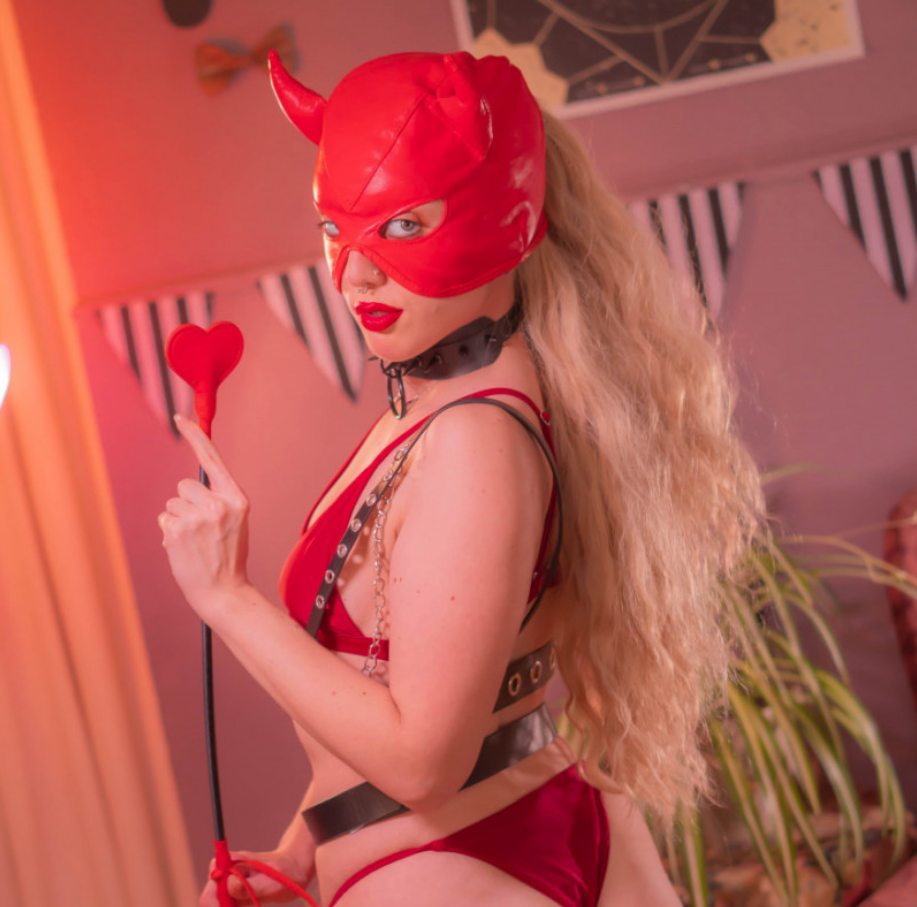
Credit: Goofy Toof
How might this cat-and-mouse game be eliminated while still preventing abuse, harassment and fake news? Goofy Toof says that social media platforms should stop targeting sex workers, not only out of respect for their ability to make a living, but because the censorship mechanisms used to police them affects artists and other content creators. Raptor suggested that major platforms might add some sort of age verification or a toggle for people who wish to see more sexually explicit material.
“I feel like Instagram should just make an adults-only version,” he says. Then he ponders the question a bit more. “But then the adults-only version might get targeted. Maybe we need new platforms that cater to such a diverse market.”
Lucero also worries that platforms that focus on “adult” content still allows straight people to complain about queer and trans material, and it might push queer and trans youth out of important conversations. “Just talking about queerness might be inappropriate for someone, but that’s what kids need to talk about if they’re coming out—they need to know that it’s not inappropriate to talk about those things,” she says. “I see the benefits of having an 18-plus system, but I also see the issues that would happen. I don’t know that there’s a perfect way to create a platform that meets everyone’s needs.”
Unless a perfect platform eventually comes along, LGBTQ2S+ people will have to direct their creative energy not only at building their art, business or community, but also at outwitting the algorithms that thwart their desire to connect.
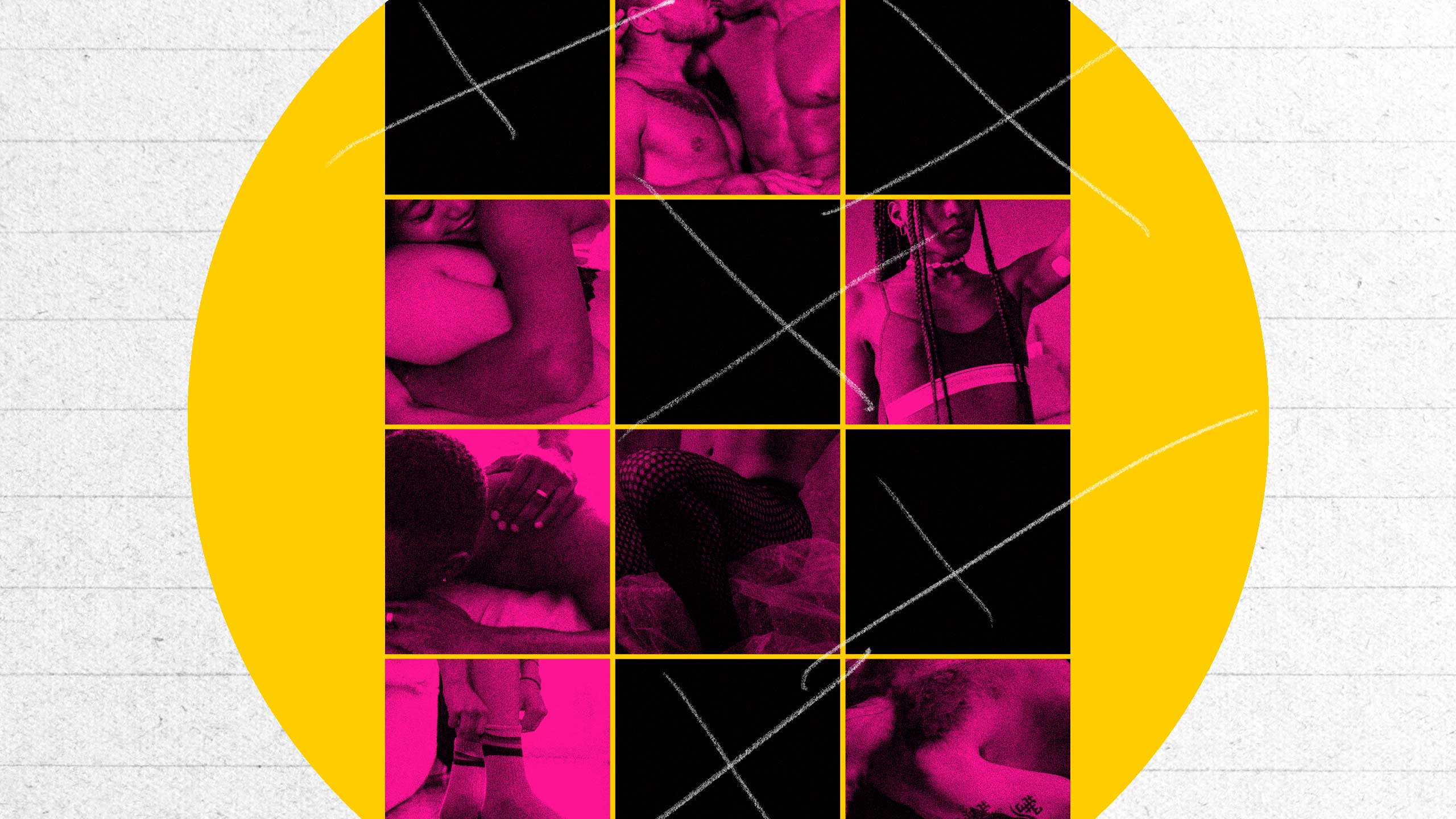

 Why you can trust Xtra
Why you can trust Xtra


